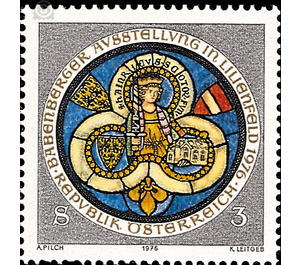exhibition - Austria / II. Republic of Austria 1976 - 3 Shilling
Theme: Art & Culture
| Country | Austria / II. Republic of Austria |
| Issue Date | 1976 |
| Face Value | 3.00 |
| Color | multi-colored grey |
| Printing Type | combination printing |
| Stamp Type | Commemorative |
| Item Type | Stamp |
| Chronological Issue Number | 857 |
| Chronological Chapter | OOS-OE2 |
| SID | 842034 |
| In 69 Wishlists | |
On July 21, 976, Emperor Otto II issued a certificate in Regensburg to the monastery of Metten near Deggendorf in Bavaria, in which a "Marchio Liutpold" is mentioned. For the first time, a member of the Babenberger family appears as Margrave of the country later named "Ostarrichi". The margrave belonged to the same sex that made the country of Austria a flourishing duchy during a 270-year reign. The Mark Austria was in 976 a relatively narrow strip of land between Enns and Traisen and reached about 990 to the Vienna Woods, with Greifenstein was the easternmost place. On the northern bank of the Danube, there were already several bases, such as 995 Krems and 1012 the area of Stockerau. Even the area east of the Vienna Woods and the Vienna area may still have become part of the Mark at the time of Leopold I. (Liutpold). In the founding phase of the eleventh and part twelfth centuries, rule was exercised through bases that soon became centers of defense, church life, justice and the economy. The special postage stamp shows a window from the Leopoldskapelle in the Augustinerchorherrenstift Klosterneuburg. It was published on the occasion of the Lower Austrian jubilee exhibition "1000 years Babenberger in Austria". On the glass painting of the Babenberger Duke Henry II with the nickname Jasomirgott, who ruled from 1141 to 1177 and 1156 became the first Duke of Austria, to see.


